LED light therapy harnesses NASA-developed technology to restore and rejuvenate your skin without harmful UV exposure. You'll benefit from different wavelengths targeting specific concerns – red light boosts collagen, blue fights acne, and yellow promotes healing. To start, thoroughly cleanse your face and remove all mineral-based products before positioning the LED device about an inch from your skin for 15-30 minutes. You'll typically notice improvements after 4-6 weeks of consistent treatments, with results lasting up to two months. Maintain your results with regular sessions and proper skincare. This revolutionary treatment's full potential awaits as you discover its transformative steps.
Understanding LED Light Basics
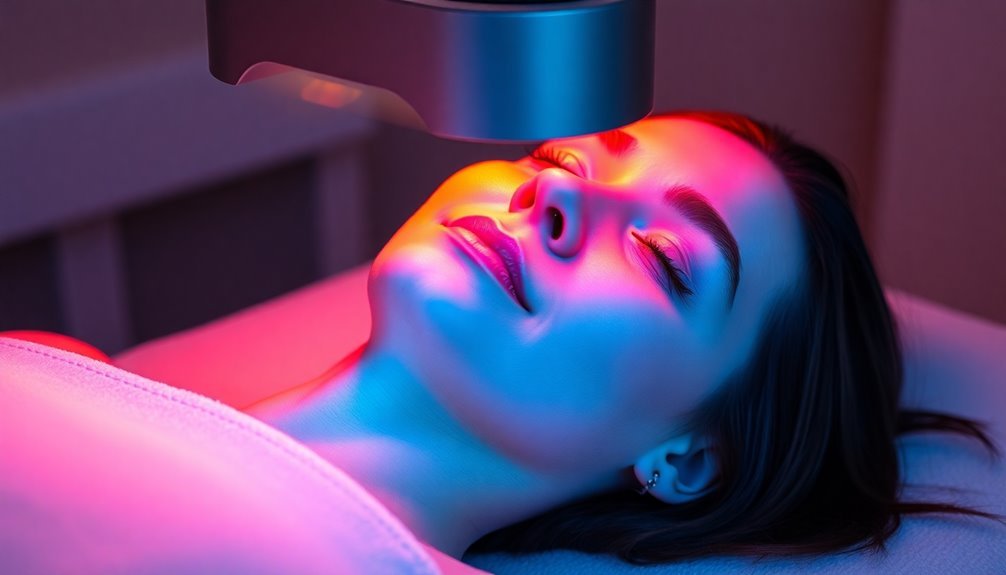
Light-emitting diode (LED) therapy has transformed from a 1960s technological innovation into a revolutionary skincare treatment. Today, it's recognized as a powerful tool for addressing various skin concerns, from acne to aging, without the risks associated with traditional treatments.
Originally developed by NASA for plant growth in space, LED therapy has come a long way in its medical and cosmetic applications. You'll find LED therapy particularly appealing because it doesn't use harmful UV rays, making it safe for all skin types and regular use.
The treatment works by using different wavelengths of light that penetrate your skin at varying depths, triggering specific biological processes for skin restoration. Each color serves a unique purpose: red light boosts collagen production, blue light tackles acne-causing bacteria, and yellow light accelerates healing.
You can receive LED therapy through professional treatments at a dermatologist's office or use at-home devices like masks and wands. While professional sessions typically last 20 minutes and may require up to 10 treatments for ideal results, at-home devices offer convenience but with less intensity.
The therapy's versatility allows you to treat various body parts, including your face, neck, chest, and hands, though you'll likely need maintenance sessions to maintain the improvements you achieve.
Preparing Your Skin
Proper skin preparation makes all the difference in maximizing your LED therapy results. Start by thoroughly cleansing your face with a gentle, non-abrasive cleanser that's suitable for your skin type. You'll need to perform a two-step cleanse: first to remove makeup, then again with a skin-specific cleanser.
Verify you've removed all mineral-based sunscreens and zinc-containing products, as these can block the light's effectiveness. Active ingredients in your usual skincare routine should be maintained for optimal results.
Before your LED session, incorporate gentle exfoliants like AHAs and BHAs to remove dead skin cells. Apply serums containing vitamin C, peptides, and retinol to enhance the treatment's benefits. However, don't use benzoyl peroxide or harsh exfoliating acids right before therapy, as they might disrupt your skin barrier.
You'll want to stimulate blood circulation using face rollers or massagers before treatment. After cleansing, apply a hydrating toner to prep your skin.
Remember to avoid sunscreen during the actual treatment session, as it interferes with red light wavelengths.
Maintain consistency in your routine, but be ready to adjust based on your skin's response. For the best results, commit to regular sessions over 4-6 weeks while monitoring your skin's progress.
Treatment Application Methods
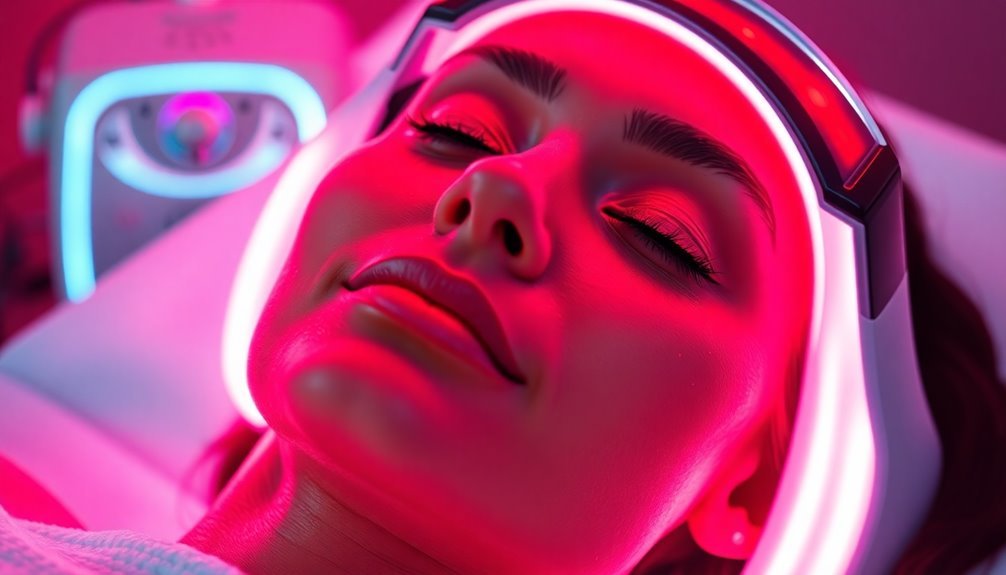
Choosing the right application method for LED therapy can substantially impact your treatment's effectiveness. Whether you're using a facial mask, light wand, or professional panel device, you'll need to follow specific protocols for the best results.
If you're using an LED panel device, position it approximately one inch from your face. You'll want to maintain this treatment for at least 15 minutes, though 30 minutes typically yields the best results.
For handheld devices or light wands, spend at least 5 minutes treating each targeted zone of your face. Make sure to wear protective eye gear during all LED light therapy sessions.
You can enhance your LED treatment by combining it with complementary therapies. Consider using enzyme treatments beforehand or incorporating IPL treatments if you're targeting acne.
Different wavelengths serve various purposes – red light addresses aging and wound healing, while blue light targets acne-causing bacteria. Green and yellow lights can help with pigmentation and inflammation.
For professional treatments, you might encounter more powerful machines at your dermatologist's office. These typically deliver higher intensity light at specific wavelengths, often requiring multiple sessions to achieve your desired results.
Always follow your device manufacturer's specific guidelines for timing and distance.
Results and Recovery Time
Experience LED light therapy's benefits by committing to consistent treatments over several weeks. You'll typically notice initial improvements after 4-6 weeks of regular sessions, with best results requiring 3-5 treatments weekly.
Your results can last for two months or longer, depending on your skin type and concerns.
You won't need any downtime after LED therapy sessions – it's completely pain-free and non-invasive. The treatment provides a warm and soothing sensation during each session. You can immediately resume your daily activities without worry. There's no special aftercare required beyond maintaining your regular skincare routine and applying SPF daily.
Your results will largely depend on several key factors. Different wavelengths target specific concerns – red light for anti-aging, blue light for acne, and near-infrared for deeper tissue repair.
You'll see better outcomes by maintaining consistency in your treatment schedule and potentially combining LED therapy with other skincare treatments.
Remember that everyone's skin responds differently to LED therapy. While some people notice improvements earlier, others might need more time to achieve their desired results. Working with a skincare professional can help you develop the most effective treatment plan for your specific needs.
Maintenance and Long-Term Benefits
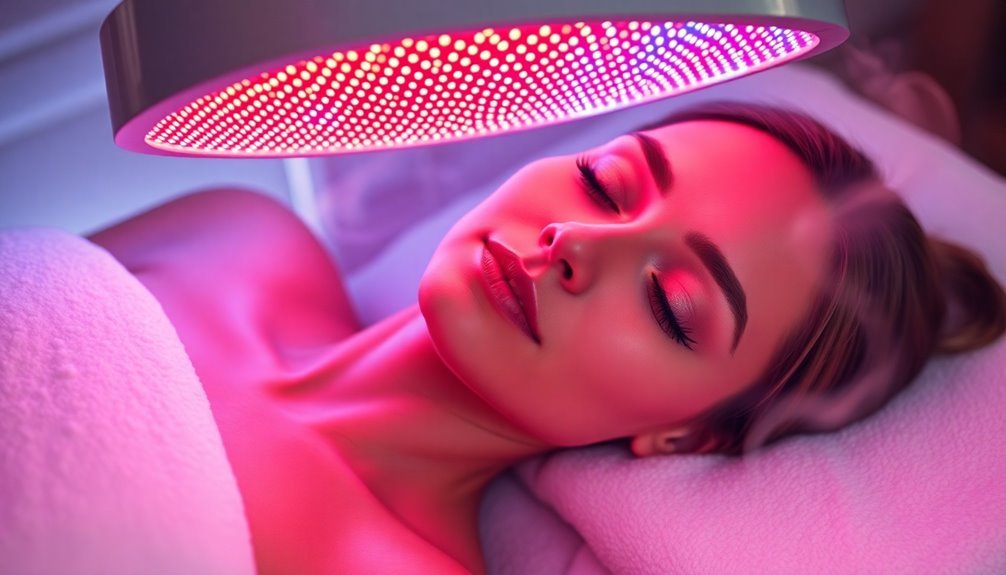
To maintain LED therapy's benefits over time, you'll need a consistent maintenance routine and proper device care. Since LED therapy results aren't permanent, you'll need regular treatments to sustain your skin improvements. LED therapy can effectively target issues like acne and wrinkles through specific light wavelengths.
While home devices may offer convenience, they typically deliver lower light frequencies than professional treatments, so you might need more frequent sessions.
Keep your device in top condition by cleaning it after each use with mild soap and water, being careful to avoid electrical components. Store it in a cool, dry place away from direct sunlight.
If your device has detachable parts, like facial masks, clean them thoroughly to prevent bacterial buildup. Don't forget to regularly inspect cords and connections for safety.
For maximum long-term benefits, you'll need to protect yourself during treatments by wearing protective goggles. If you're using Accutane or photosensitizing products, consult your doctor before continuing treatments.
Watch for rare side effects like inflammation or rashes. Remember that while professional treatments with short, high-powered pulses deliver the most dramatic results, you can still achieve notable improvements with consistent home treatments if you follow manufacturer guidelines and maintain realistic expectations.
Frequently Asked Questions
Can LED Therapy Help With Scarring From Severe Burns?
Yes, LED therapy can help with your burn scars. It'll reduce inflammation, stimulate healing, and enhance skin regeneration. Research shows it's effective for severe burns, decreasing pain and improving tissue repair through targeted light wavelengths.
Is It Safe to Combine LED Therapy With Injectable Facial Treatments?
You'll need to wait at least 5-7 days after injectable treatments before using LED therapy. It's safe to combine them, but always follow your provider's specific guidelines and recommended waiting periods.
Does Skin Color or Thickness Affect the Effectiveness of LED Treatment?
No, neither your skin color nor thickness affects LED treatment's effectiveness. The light's wavelength determines penetration depth, and it's safe for all skin types. You'll get consistent benefits regardless of these factors.
Can LED Therapy Reduce Symptoms of Skin Conditions Like Rosacea?
Yes, LED therapy can effectively reduce your rosacea symptoms. It'll help decrease inflammation, redness, and broken capillaries using specific wavelengths of light. You'll see best results when combining red and near-infrared treatments.
Are There Specific Wavelengths That Work Better for Sensitive Skin?
Yes, you'll find yellow light (570-590 nm) and red light (620-780 nm) are gentler options for sensitive skin. They work effectively to reduce inflammation and redness while promoting healing without irritation.
In Summary
You're now equipped to harness the power of LED light therapy for your skin restoration journey. Whether you're targeting acne, aging, or inflammation, consistent treatments will help you achieve ideal results. Remember to follow proper preparation steps, stick to recommended treatment times, and maintain your routine. When used correctly, LED therapy can become an effective part of your long-term skincare strategy.
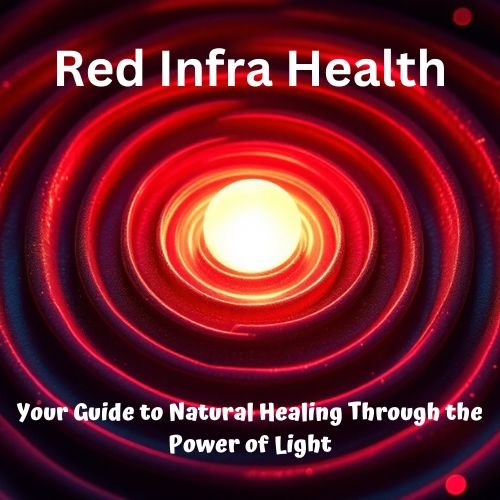
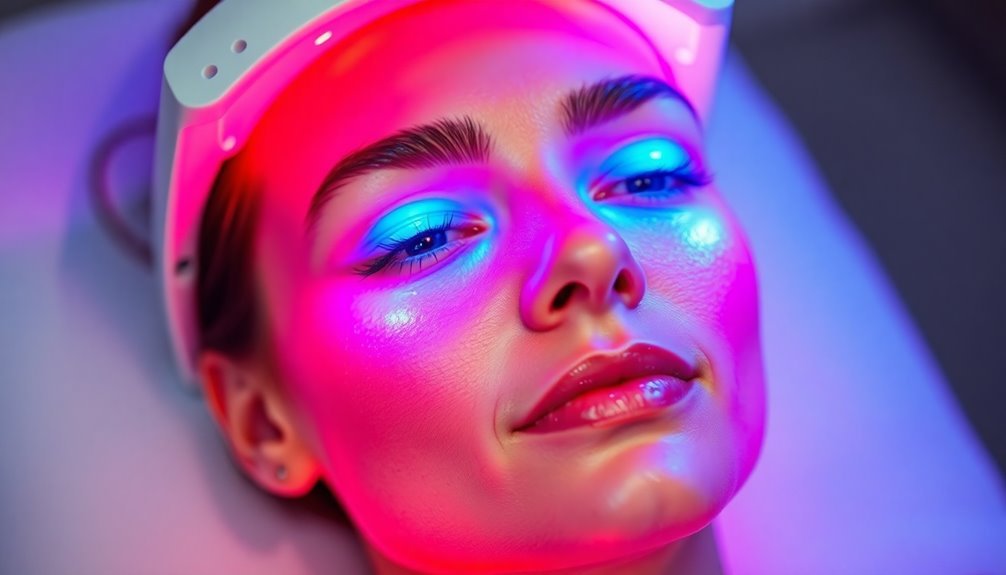

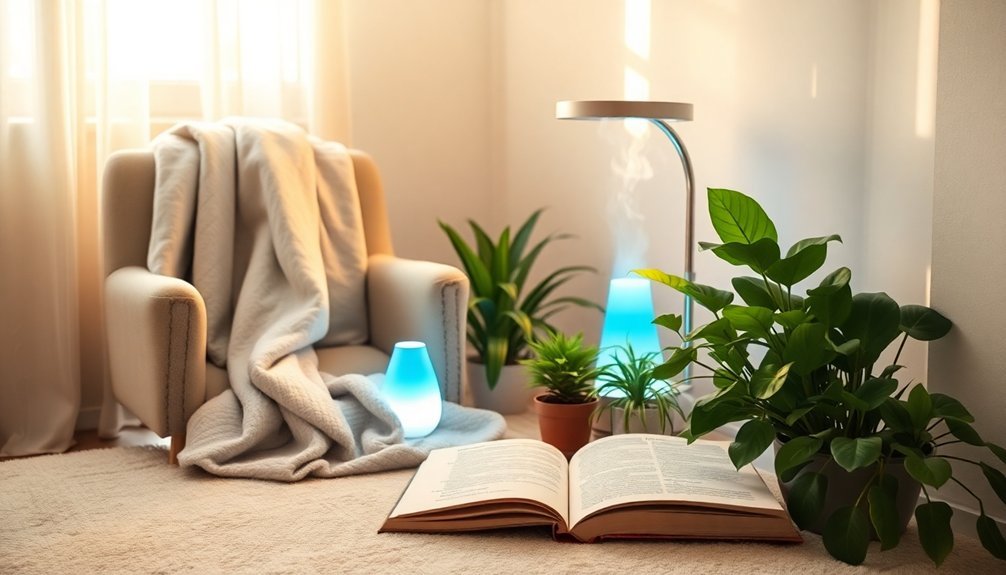

Leave a Reply